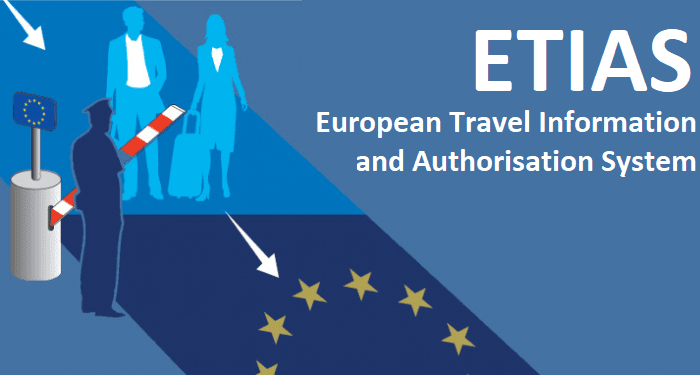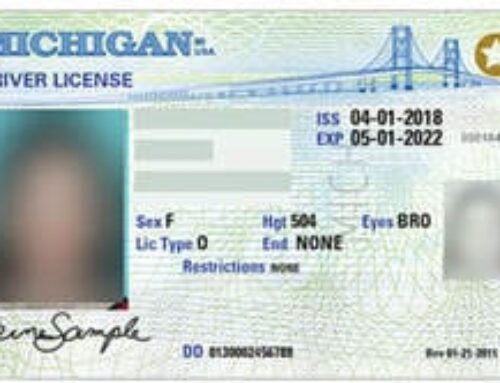“The Unvarnished Traveler” by Brian Raymond
“The Unvarnished Traveler” by Brian Raymond

If you’ve got your heart set on exploring the cobblestone streets of Italy, strolling through Parisian markets, or hiking the fjords of Norway in the next few years, there’s some important news you’ll want to know. Europe is changing the way it welcomes international visitors—and yes, that includes travelers from the United States.
Two major systems are being introduced to strengthen European border security and manage short-term visits more efficiently: the Entry/Exit System (EES) and the European Travel Information and Authorization System (ETIAS). These changes won’t stop you from traveling, but they will change what you need to do before boarding your flight.
Let’s break it all down in plain English.
What Is the Entry/Exit System (EES)?
The Entry/Exit System—abbreviated as EES—is set to launch in October 2025. It’s a new automated system that will replace the current method of manually stamping passports at border checkpoints in Europe’s Schengen Area (which includes most of the European Union and a few neighboring countries like Switzerland and Norway).
EES will digitally track the details of when you enter and exit Europe. This includes:
-
The date and place of entry and exit
-
The length of your stay
-
Biometric data (such as fingerprints and facial images for first-time visitors)
This system is designed to improve security, identify overstays, and speed up border crossings over time. Instead of waiting in long lines for a border agent to stamp your passport, most travelers will go through self-service kiosks at major airports and entry points.
While you’ll still interact with border officials as needed, EES is expected to make travel faster, more efficient, and safer by accurately tracking visitors coming and going.
What Is ETIAS?
Shortly after EES is rolled out, Europe will introduce another system called ETIAS—the European Travel Information and Authorization System.
This one will come into effect in 2026 and will apply to visa-free travelers, which includes U.S. citizens.
Right now, Americans can hop on a plane to most European countries with a passport and a return ticket—no advance paperwork needed. But starting in 2026, you’ll need to apply for travel authorization before your trip.
Here’s what to expect with ETIAS:
-
It’s not a visa, but it works similarly to a travel pre-screening.
-
You’ll fill out a simple online application, providing your passport details and answering some basic security and health questions.
-
The cost will be €7 (free for travelers under 18 or over 70).
-
In most cases, you’ll get approval within minutes, but travelers are advised to apply at least a few days before departure.
-
Once approved, your ETIAS is valid for three years (or until your passport expires, whichever comes first), and you can use it for multiple trips.
Why Is Europe Doing This?
Both EES and ETIAS are being implemented to:
-
Improve security by knowing who’s coming and going
-
Prevent overstays and track travel patterns more accurately
-
Simplify and speed up the border process over time
-
Align with global standards—including systems already used by countries like the U.S.
These changes may seem like a hassle at first, but they’re part of a broader global trend. Just like travelers from Europe have had to apply for ESTA before entering the U.S. under our Visa Waiver Program, Americans will now be expected to do something similar before entering Europe.
In other words: we’ve been doing it to them, and now they’re doing it back.
What Does This Mean for You?
If you’re planning a European trip in late 2025 or 2026 and beyond, you’ll need to adjust your travel prep slightly. Here’s how:
-
Make sure your passport is valid well beyond your planned travel dates. If it’s due to expire, renew it early.
-
Be prepared for new border procedures in fall 2025, including biometric checks via EES.
-
Plan to apply for ETIAS starting in 2026, ideally at the same time you book your flights or accommodations.
Don’t worry—these changes aren’t designed to make travel harder. In fact, once everything is in place, you may find your airport arrival and departure process even more efficient than it used to be.
Will These Changes Affect Your Travel Experience?
The short answer? A little—but only upfront.
Yes, you’ll need to plan ahead and complete an extra online form before your trip, and you might encounter some learning curves as EES and ETIAS are rolled out. But once you’re in Europe, your travel experience won’t change. You’ll still be free to explore the same beautiful cities, countryside, beaches, and cultural landmarks you’ve always dreamed about.
Also, this won’t affect your ability to travel for business, leisure, study, or family visits—so long as your visit is under 90 days within a 180-day period.
For longer stays or different purposes (like work or immigration), visa requirements already apply and will remain unchanged.
Travel Tips for Staying Ahead of the Changes
Here are some helpful tips to keep your European travel plans stress-free as these new systems go live:
-
Bookmark Official Websites – When ETIAS applications open, make sure you’re using the correct, official site to avoid scams.
-
Use a Travel Advisor – A travel advisor can guide you through new requirements and help with forms and planning, especially if you’re traveling with a group.
-
Check Entry Requirements for Each Country – While ETIAS covers most Schengen countries, individual countries may have additional requirements.
-
Apply Early – Don’t wait until the night before your trip to fill out the ETIAS form. Build it into your planning timeline, just like you would a passport or travel insurance.
-
Stay Updated – As launch dates approach, there may be small adjustments or country-specific changes. Sign up for alerts or check for updates as your departure nears.
Final Thoughts: Keep Traveling, Just Be Prepared
The introduction of EES and ETIAS marks a new chapter in how Americans and other visa-free travelers enter Europe—but it’s nothing to worry about. In fact, it reflects how valued and frequent transatlantic travel has become. Europe isn’t closing the door—it’s just adding a new layer of safety and structure.
If anything, this is a reminder to always travel thoughtfully and prepared. And if the idea of an extra form or fingerprint feels like a hurdle, remember what’s waiting for you on the other side: sunset in Santorini, art in Florence, pastries in Lisbon, hikes in the Alps, and connections that go beyond borders.
The world is still very much open. Europe is still yours to explore. Just make sure your passport is up-to-date, your paperwork is in order—and your spirit of adventure is ready to go.
So how to choose the right vacation for you?
Vacations are an investment! With literally thousands of options, choosing the right vacation and the best value is difficult to sort through. That’s where I bring my 12 years of travel experience and expertise to do this right, and get you the best value for your money. With the backing of the largest travel consortium behind me, we have options you can’t find online. Plus our work just gets started once we book your dream vacation. Chat with us to learn more.
The world awaits you and we look forward to assisting you in choosing the exact right adventure on the waters or land for you and your companions!









